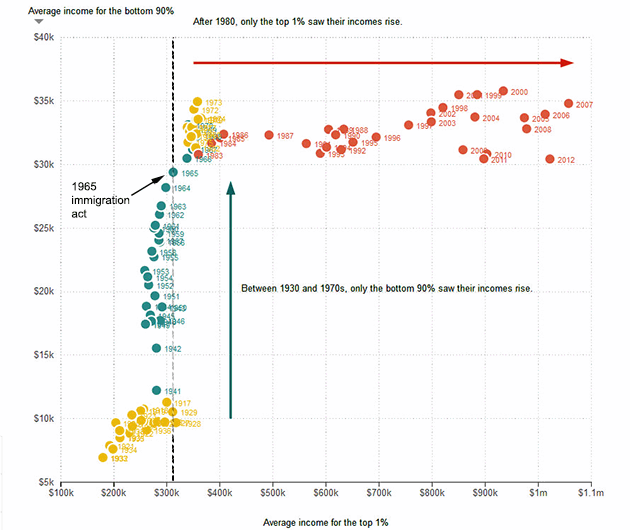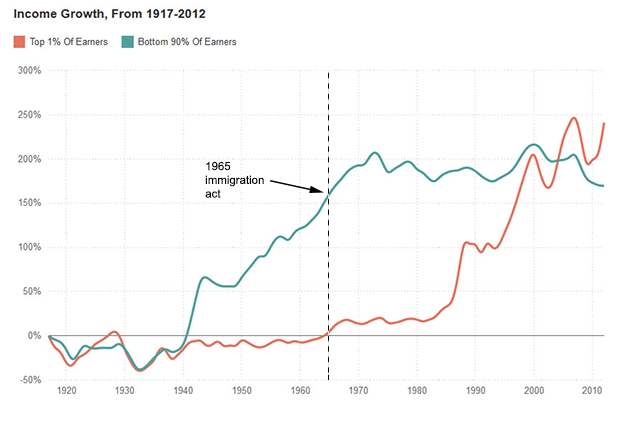Working wages stagnated after the 1965 Immigration Act
In the ZeroHedge article, Why The "1%" Hates The Gold Standard, Tyler Durden points out how the bottom tier of working class wages had risen between 1930 and the 1970s. Then they stagnated, while the top 1 percent saw their incomes rise.
NPR described the transformation as a result of "a combination of global competition, automation, and declining union membership, among other factors, led to stagnant wages for most workers."
Durden offers an additional causative factor: the disparity began in 1971 when Nixon ended the US Gold Standard.
However, as pointed out by Patrick Cleburn on VDare, this disparity also began immediately after the Immigration and Reform Control Act (IRCA) Amnesty of 1986, which was followed by six more Congressional amnesties for illegal aliens. The result was a virtually endless stream of both legalized immigrants and new illegal illegal (drawn by the promise of amnesty) which displaced American workers and depressed American wages.
Here are the charts from the Durden article, augmented to show the 1965 Immigration Act:
(Click on images to expand in a new window.)


